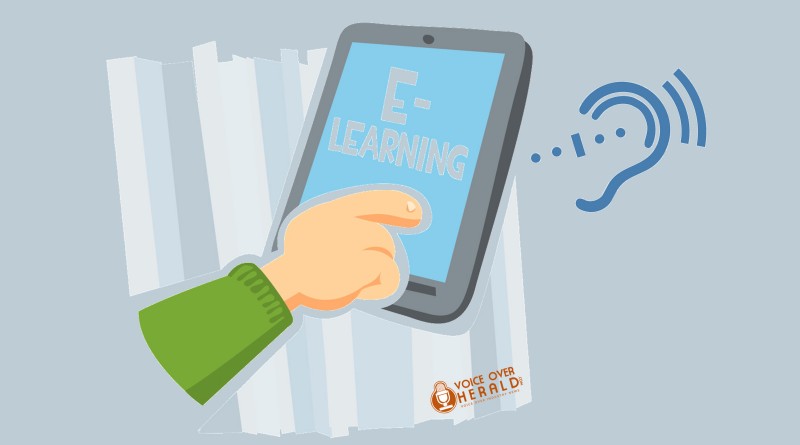Tips on How to Create an Effective e-Learning Course
An e-Learning course should be compelling whether you have a global audience or a small group of learners.
In the last 10 years we have seen a growth in the use of e-Learning not just for education sector but also a learning technology for company employees. It is estimated that in the next 5 years, around half of the college courses around the globe will include e-Learning courses and over 40% of Fortune 500 companies will use some form of e-Learning for their formal employee training. However despite this growing number of e-Learning utilization, a lot of these courses can be considered a waste and ineffective.
When it comes to creating an effective e-Learning course there are a lot of factors to consider – quality content, design, and navigation are the foremost in thought when building an e-Learning course. However, what is often overlooked is the interactivity. Even a high-quality e-Learning course will fall short of being successful when the learner is not motivated and fully engaged to learn. When this happens, you lose the main of objective of creating the course in the first place, and that is for your learners to retain the knowledge or information you are providing, and address a skill or performance goal.
To create a fully effective, engaging and immersive e-Learning course you would need to first answer the following questions:
What?
Whether you are converting a face to face learning course or creating a direct to e-Learning format course outline, content is the key and more so it’s relevancy.
- What are the objectives this course?
- What added value do you wish to impart?
- “What’s in it for me?”
- What are the key outcomes and performance goals for this course?
You should create a clear e-Learning course structure that has high quality content, relevant and with measurable outcome. For a learner to be motivated, they should be able to clearly understand not just the objectives of the course but also the value of the course to them, so determining a quality content is not just based on what YOU think is important, but also what you believe is valuable to your learner. A person normally gets involved in something if firstly, they know what they are getting into, and secondly, they know what they can get out of it. “What’s in it for me?” and how relevant this new knowledge is to their studies, work or role will keep them fully engaged.
Create a content that is specific for a desired skill set or performance to improve. If your objectives cannot be tied up to a skill set or performance goal then an e-Learning course might not be the best option.
Who?
Who are your target learners?
It is important to know who you are creating the e-Learning course for, because they determine the design, structure, and style of your online course. Whether you are creating a course for students or employees, you need to know what appeals to them to be able to grab their attention, improve their engagement and reduce the dropout rates.
How do you do this? – by having conversations.
Conduct focus groups or one-on-one conversations, depending on the size and scope of your target learners. Find out their needs, interests, limitations, preferences and expectations to be able to build an effective e-Learning design. A learner will sit through a learning experience that is familiar to them. To keep them engaged, the learner should be convinced that you designed the course with him in mind.
Once you have outlined your What’s and Who’s, you can now layout how you will execute your e-Learning course.
How?
- How to navigate and use?
When designing an e-Learning course, navigation and functionality should be top priority. An intuitive and well-organized platform helps the learner to focus on the course rather than worry about how to use the system and any technical issue that may arise.
The platform should also be easy to navigate and free to explore. People now have a better appreciation for freedom and control when it comes to the online world, so having a linear experience while going through an online coursework can be frustrating to a learner. Give the learner the freedom to scan and review information. Give them more control on how they pace through the course so as not to overwhelm them.
Design your course in a way that encourages “learning” rather than “data dumping”. Don’t push information to the learner by creating a series of click-and-read screens, rather engage the learner through problem solving. And as the learner attempts to solve the problem he’ll pull the information he needs.
Apart from knowing your learners background and interest, an effective e-Learning course takes into consideration various learning styles when the course is being designed.
A visual learner will benefit from visual multimedia presentations throughout the coursework. A verbal learner may absorb information better when it is presented in text. An aural learner is kept engaged with narrated instructions.
- How does it look?
A variety of visual elements will be more appealing to the learner. Add visual components that can make the coursework more eye-catching and engages the learner to explore. Use different multimedia tools such as photos and videos. When designing your course, do not go overboard with superfluous visual theme, keep it interesting yet relevant to your content. Do not saturate your platform that it will cause difficulties in navigation.
- How does it sound?
The audio of an e-Learning course is as important as the visuals. A human voice guiding the learner through the course draws the learner closer to the content. Three main factors to consider when applying audio content to your e-Learning course are:
- What to say?
- How to say it?
- Who should say it?
Never overwhelm the learner with excessive information, whether through the text they read, the pictures they see or the narration they hear. Narrate the concepts and pictures, explain the thought, give examples, tell a story, or summarize, rather than reading the complete text. When the text is simple, let the learner read for themselves.
The last thing a person would want to hear while learning is the sound of a robot. The voice you use should sound natural and conversational, warm and encouraging. Using the right tone and style will make your learners listen attentively, and hold their interest longer.
To make it more conversational, avoid using jargons or long words, however if it can’t be avoided or it is part of the content, explain the meaning of the jargon. Inject positive words and phrases, especially during an activity like Great!, Good job!, Opps!, Fantastic!, Wow! to make it fun and more human. Keeping it light and casual (but still professional) can appeal more to your learners and make them feel comfortable in finishing the whole course.
Lastly, you may have the right content, the right script and the right direction for your audio, but if it is not delivered properly and professionally, it will be all for naught. To make an effective e-Learning audio, it should be delivered by a voice over talent. A professional e-Learning voice over actor is experienced in delivering in a tone and style that is engaging to the listener, with the right inflection, correct pronunciation, clear enunciation as opposed to an amateur (or someone from your own staff) who just reads off from the presentation.
A professional voice over actor will also have access to an industry standard recording studio and audio editing software. They can present a clean and clear audio recording without any background noise, the type of quality recording that should be used for an e-Learning course.
People have different interests, needs, learning abilities, learning styles, and intelligence comes in different levels and forms. These differences affect the way they learn, how engaged they can be about a certain subject and their retention of the knowledge imparted. An e-Learning content and structure that considers what motivates the learners and what they value will lead to an effective course that can achieve the set key outcomes.
But while majority of classroom based courses or trainings can be translated to an online course, always be prepared to adjust the learning methods and techniques you use to develop a course that is suitable for your online learner.

